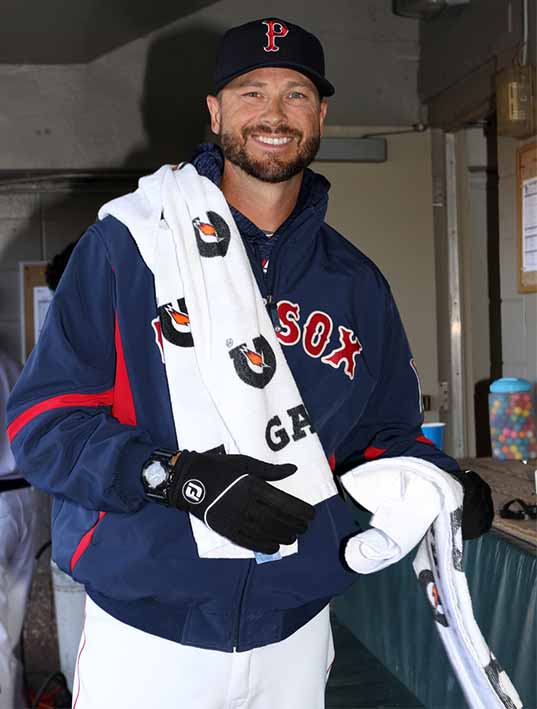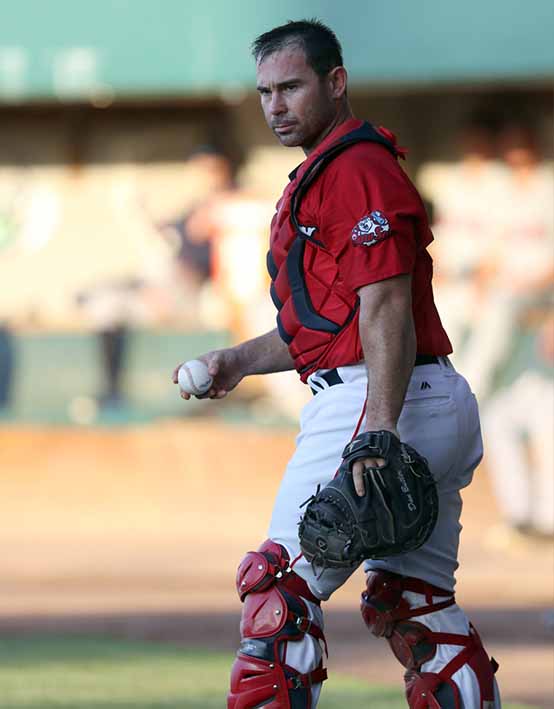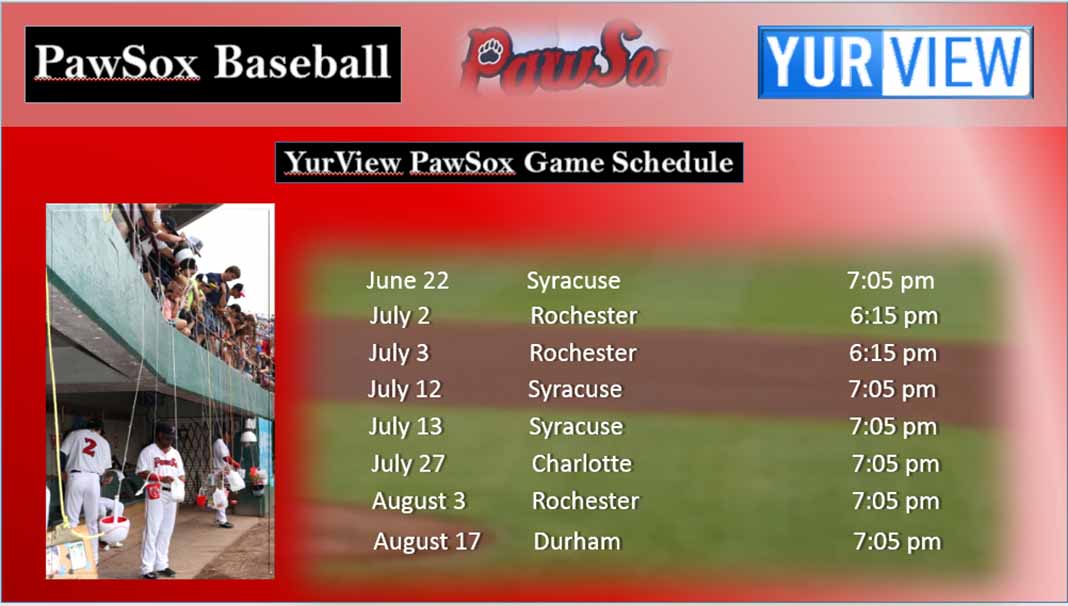There are those who view mound visits as one of biggest culprits behind the bogging down of baseball games to the point where a nine-inning contest seems and feels interminable. Inside the Pawtucket Red Sox clubhouse, these stoppages are viewed as necessary evils.
The genesis of the catcher heading out to talk to the pitcher, or the manager and/or pitching coach coming out from the dugout, can vary, thus offering credence to the idea that no two mound visits are ever alike.
“Sometimes you have to calm a guy down or give him a kick in the pants. Sometimes the pitcher has been covering bases and you want to give him a blow. Sometimes it’s a critical point in the game and there’s a lot on the line. You want him to understand what the pitch plan is so he doesn’t forget to execute it,” PawSox manager Kevin Boles. “Each visit has a different purpose.”
In an effort to promote more action and less downtime, professional baseball teams – majors and minors – this season have had to pick-and-chose when to call for a mound visit. What was an unlimited supply of breaks in the action was capped at six visits per contest. Through the season’s first three-plus months, the PawSox haven’t run into danger in this area. That doesn’t mean those in the dugout who are in-charge of making decisions aren’t wrestling with whether to walk to the mound in the game’s early innings in the event that trouble arises or try and save the visits for the latter innings.
“It’s totally changed the way you maybe talk to a pitcher now as opposed to the past,” Pawtucket pitching coach Kevin Walker said. “Six visits can be tight, but that’s why you need to be judicious and make tough decisions, especially early in games.”

Added PawSox catcher Dan Butler, “Before this rule was put in, I wouldn’t hesitate to visit the mound after a long at-bat, something in the 7-8 pitch range, or after the pitcher has to go over to cover first base to see if he’s okay. You can’t do that anymore. Before if a guy was laboring and he needed a breather, there would be no question on my end.”
If anything, having a hard cap of six mound visits per contest has spurred creativity and attempts at circumvention.
“You may flash a hand signal or two to the catcher,” Walker said. “He’s got a clear view that the pitching coach or manager aren’t privy to because they’re watching the game from a 45-degree angle.”
By heading to the mound, the catcher or pitching coach is basically calling a timeout. What is the purpose for a typical mound visit?
“If you see something mechanically, you talk to him. Often times, it’s about reminding the pitcher to slow down because he’s working too fast. Other times, you go out there because the inning is getting too long and fatigue starts to set in. You want to give him a breather,” Walker said. “When you’re in the heat of competition, maybe you lose sight of what you’re doing and continue to make the same mistakes over and over. Sometimes, you need a second pair of eyes to come out.”
For catchers like Butler, the conversation is different when it’s just him and the pitcher standing on the mound.
“When it’s one-on-one, it’s a prime chance let the air out of the pitcher’s shoulders,” Butler said. “I might have a tidbit if I notice the pitcher is pulling towards one side of the mound … something small mechanically. Sometimes they have questions for me. What are we thinking here as far as pitch selection?”

There have been times when Boles will stand out there with his PawSox pitcher, catcher, and infielders and not say a word.
“I’ll throw it on them and say, ‘What do you guys see?'” Boles said.
Naturally, the tenor of mound visits is different when dealing with starting pitchers as opposed to relievers.
“It’s about hitting the reset button because they’re looking for length out of you,” said PawSox starting pitcher Jalen Beeks, recently selected to represent the PawSox and the International League at the Triple-A All-Star Game on July 11 in Columbus, Ohio.
“A lot of times, the pitching coach comes out when you’re in trouble. You’re not throwing strikes or whatever,” said PawSox relief pitcher Ryan Brasier, who, like Beeks, was also named an International League All-Star. “When it’s late in the game and the catcher or pitching coach comes out, sometimes it might be about, ‘We’re going to play this hitter coming up a certain way.'”
Everyone who was interviewed for this story agreed that late-game mound visits have a strategic tenor to them.
“Buying an extra 30 seconds definitely provides the guy in the bullpen more time to get ready,” Walker said.
“Strategy-wise, you’re definitely looking to slow things down and stop the other team from getting the momentum going,” Brasier said.
Once the mechanism of slowing the game down when it speeds up for pitchers has been activated – hopefully before the home-plate umpire heads out there with the firm purpose of breaking up the conference – all involved parties tend to feel better.
“That pause … it definitely helps you get back on track just when it appears that things appear to be snowballing out of control,” Walker said.
DON’T MISS THE NEXT PAWSOX GAMES ON YURVIEW – JULY 12TH AND 13TH – 7 P.M. YURVIEW IS COX CHANNELS 4 AND 1004 HD.










